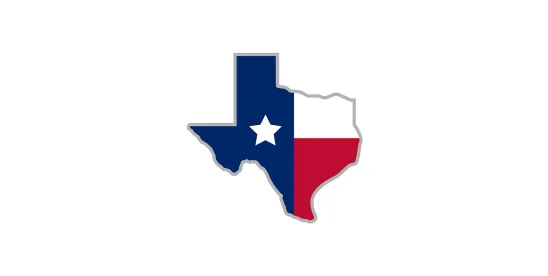Move over Wall Street, here comes Y’all Street. The Texas Stock Exchange (TXSE) is set to launch in Dallas, Texas with plans to begin trading in the second half of 2026, according to people familiar with the matter. The TXSE would be the first major U.S. stock exchange to launch in decades and has secured over $120 million in funding from investors. The exchange aims to provide an alternative to existing exchanges.
The TXSE emerges as some U.S. companies have expressed concerns with the regulatory environment and fee structures of existing exchanges. According to The Wall Street Journal, corporate leaders have voiced concerns about increasing compliance costs and listing requirements on other exchanges. Texas officials view the state’s business environment and expanding financial sector as factors that would support a new national stock exchange.
The potential benefits of the TXSE are as follows:
- Regulatory Flexibility and Efficiency. Texas has a regulatory climate characterized by lower taxes and business-oriented policies. Companies wishing to be listed on the TXSE may benefit from Texas’s business environment, potentially reducing compliance costs and administrative burdens. Additionally, compared to other exchanges, the TXSE may provide more straightforward and less burdensome listing requirements beyond those the Securities and Exchange Commission mandates, including reduced reporting obligations, fewer mandatory disclosures, and greater flexibility in corporate governance structures. This approach is designed to attract companies seeking a more predictable and business-oriented environment.
- Lower Listing and Transaction Fees. By leveraging advanced technology and a lean operational model, the TXSE aims to offer lower listing and trading fees compared to competing exchanges, making public markets more accessible to a broader range of companies.
- Enhanced Market Competition. The TXSE aims to introduce competition to the current U.S. capital markets, offering an option to the New York Stock Exchange (NYSE) and NASDAQ. This competition may drive down listing fees, improve service quality, and foster innovation in trading technology and market structure.
- Regional Economic Growth. The TXSE may help further underscore Texas’s status as a financial hub, potentially attracting investment, talent, and ancillary businesses to the region. By establishing a new exchange in Texas, the TXSE provides geographic diversification for issuers and investors. This move aligns with broader trends of corporate relocations and economic growth in the Sun Belt, offering issuers access to new pools of capital and talent. Notably, the NYSE recently moved its Chicago-based exchange to Dallas and rebranded it as NYSE Texas, underscoring the growing prominence of Texas in the national financial landscape.
- Focus on Shareholder Value and Enhanced Access for Emerging Companies. The TXSE has signaled an intent to prioritize shareholder interests and corporate governance, appealing to companies and investors seeking a more traditional approach to public markets. Additionally, the TXSE has signaled its intent to be particularly welcoming to mid-sized and emerging growth companies, which may face challenges meeting the stringent requirements or higher costs of existing exchanges. This focus may spur innovation and job creation by providing more companies with access to public capital.
While the TXSE is still finalizing its rules and procedures, companies seeking to list on the TXSE may consider the following steps:
- Preliminary Consultation. Companies wishing to be listed on the TXSE must engage with TXSE representatives to assess eligibility and discuss listing requirements, including financial thresholds and corporate governance standards, such as the below:
| – | Corporate Governance: maintaining an independent board of directors, establishing audit and compensation committees, and adhering to best practices in governance. |
|
| – | Financial Standards: meeting minimum thresholds for revenue, net income, market capitalization, and shareholders’ equity. For example, companies may need to demonstrate a minimum market value of publicly held shares and a history of profitability or revenue growth. |
|
| – | Shareholder Base: meeting minimum thresholds of round-lot shareholders (typically 400 or more) and minimum thresholds of publicly held shares. |
|
| – | Other Requirements: meeting certain standards regarding share price, operating history, and corporate structure. The TXSE may also introduce innovative listing standards to attract a broader range of issuers, including special purpose acquisition companies (SPACs), real estate investment trusts (REITs), and international firms seeking a U.S. listing. |
- Application Submission. Submitting a formal application, including audited financial statements, corporate documents, and disclosures similar to those required by the SEC.
- Regulatory Review. The TXSE will likely conduct a thorough review of the application, ensuring compliance with its listing standards and SEC regulations. This process may involve requests for additional information or clarifications.
- Approval and Listing Agreement. Upon successful review, the company will likely need to enter into a listing agreement with the TXSE, outlining ongoing disclosure obligations and compliance requirements.
- Initial Public Offering (IPO) or Direct Listing. After approval, companies may have the option to either conduct an IPO or pursue a direct listing, depending on their capital-raising needs and strategic objectives.
- Ongoing Compliance and Reporting. After getting listed, the listed companies will likely be required to adhere to continuing disclosure obligations, periodic reporting, and corporate governance standards the TXSE and the SEC set, including the filing of periodic reports (such as Forms 10-K, 10-Q, 8-K) and adherence to Regulation S-K and S-X.
As of July 2025, the TXSE has not yet published its final, detailed listing requirements for secondary listings. However, based on industry standards and preliminary statements from TXSE representatives, companies seeking a secondary listing on the TXSE will likely need to meet certain financial, governance, and disclosure criteria. These typically include maintaining a minimum market capitalization, a specified number of publicly held shares, and a minimum share price. Companies may also be expected to comply with ongoing reporting and corporate governance standards similar to those other major U.S. exchanges require. Additionally, the TXSE may require that such companies are in good standing on their primary exchange and that such companies provide all necessary disclosures in accordance with U.S. securities laws. The TXSE may release its official secondary listing requirements closer to its launch date, so companies interested in a secondary listing should monitor the exchange’s announcements for the most up-to-date information.
Companies wishing to be listed on the TXSE and potential issuers may be able to begin listing their shares on the TXSE once the exchange completes its regulatory approval process, which is expected to conclude in the second half of 2025. Upon receiving the necessary approvals from the SEC and other relevant authorities, the TXSE will open its platform for both initial public offerings (IPOs) and secondary listings. This will allow companies seeking to go public for the first time, as well as those already listed on other exchanges, to list their shares on the TXSE. The TXSE will announce specific dates and listing requirements as the launch date approaches.




 />i
/>i

